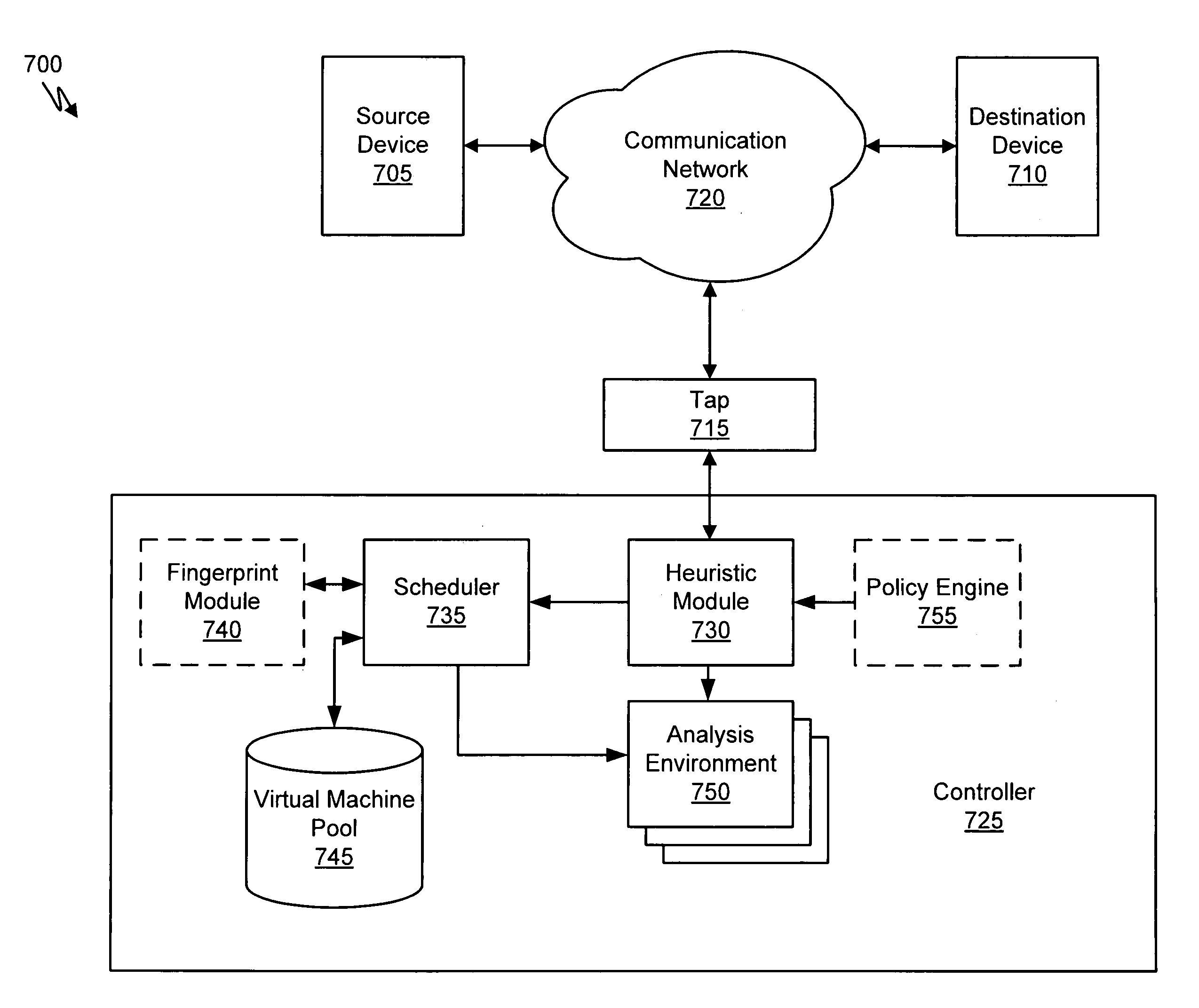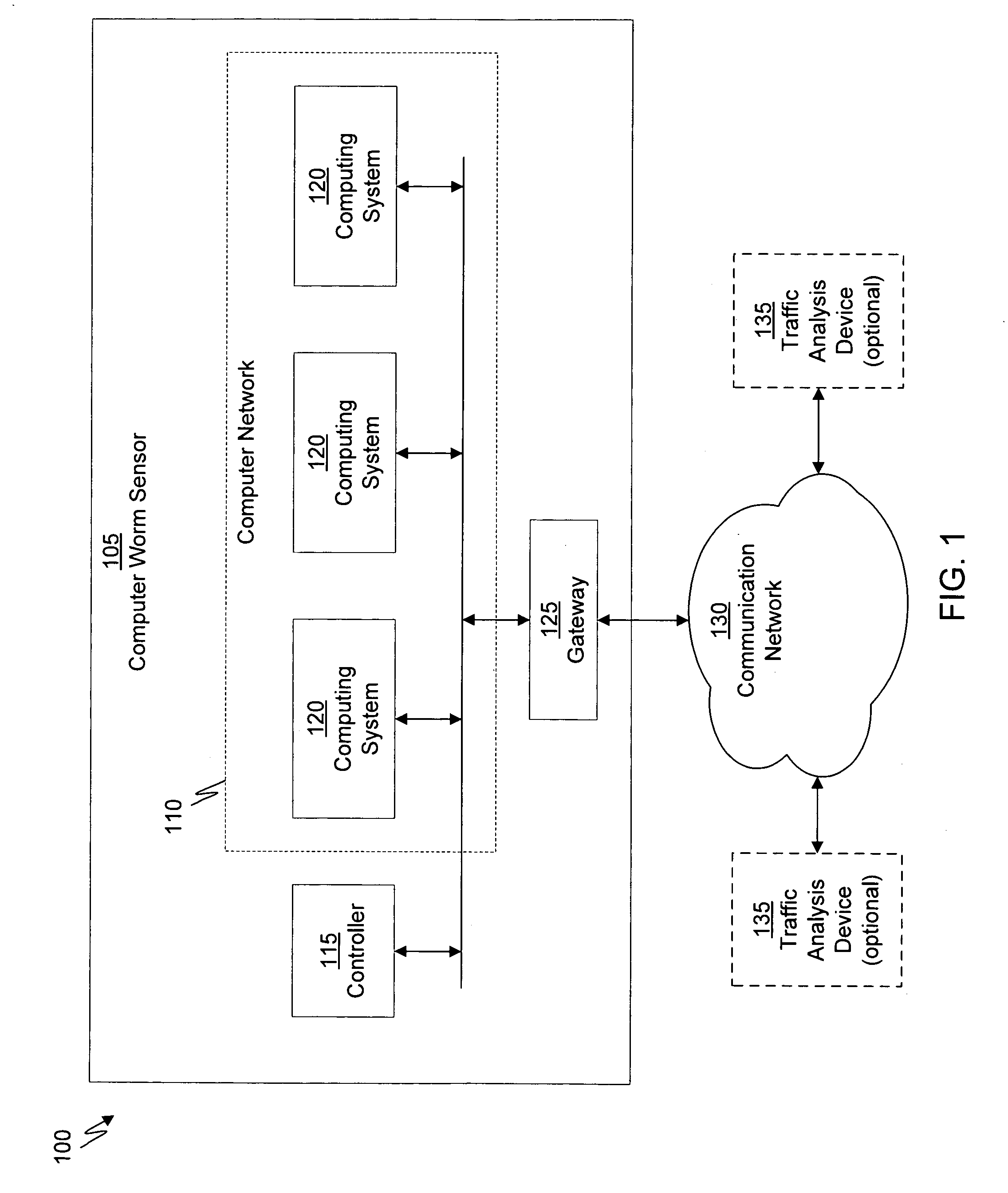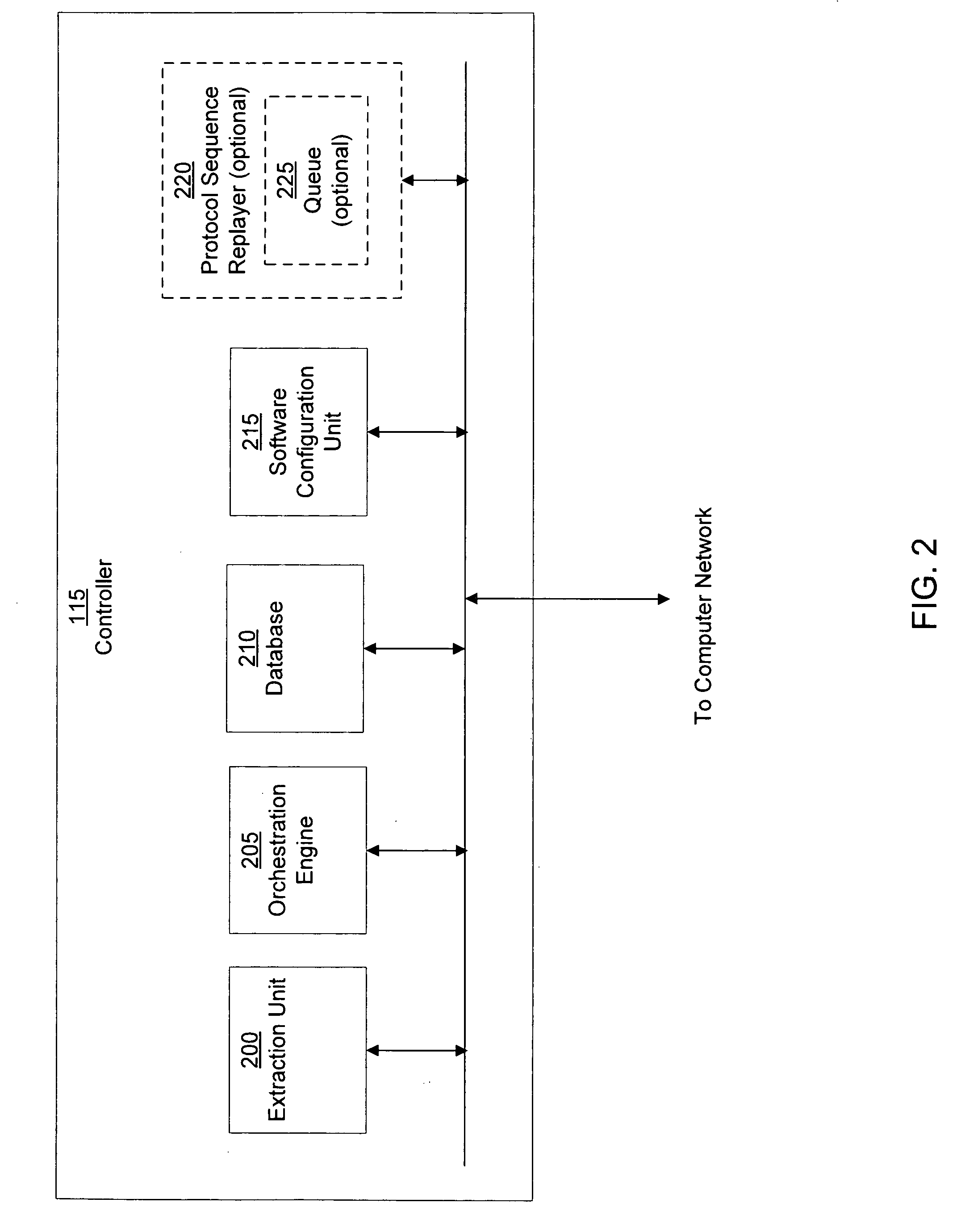Virtual machine with dynamic data flow analysis
a virtual machine and data flow technology, applied in the field of virtual machines with dynamic data flow analysis, can solve the problems of increasing complexity and sophistication of modern computer worms, difficult to detect computer worms, and difficult to distinguish between ordinary communications traffic and computer worms
- Summary
- Abstract
- Description
- Claims
- Application Information
AI Technical Summary
Benefits of technology
Problems solved by technology
Method used
Image
Examples
Embodiment Construction
[0036]An unauthorized activity containment system in accordance with one embodiment of the present invention detects computer suspicious activity, models the suspicious activity to identify unauthorized activity, and blocks the unauthorized activity. The unauthorized activity containment system can flag suspicious activity and then model the effects of the suspicious activity to identify malware and / or unauthorized activity associated with a computer user. The threshold for detecting the suspicious activity may be set low whereby a single command may be flagged as suspicious. In other embodiments, the threshold may be higher to flag suspicious activity of a combination of commands or repetitive commands.
[0037]Unauthorized activity can include any unauthorized and / or illegal computer activity. Unauthorized activity can also include activity associated with malware or illegitimate computer use. Malware is software created and distributed for malicious purposes and can take the form of...
PUM
 Login to View More
Login to View More Abstract
Description
Claims
Application Information
 Login to View More
Login to View More - R&D
- Intellectual Property
- Life Sciences
- Materials
- Tech Scout
- Unparalleled Data Quality
- Higher Quality Content
- 60% Fewer Hallucinations
Browse by: Latest US Patents, China's latest patents, Technical Efficacy Thesaurus, Application Domain, Technology Topic, Popular Technical Reports.
© 2025 PatSnap. All rights reserved.Legal|Privacy policy|Modern Slavery Act Transparency Statement|Sitemap|About US| Contact US: help@patsnap.com



